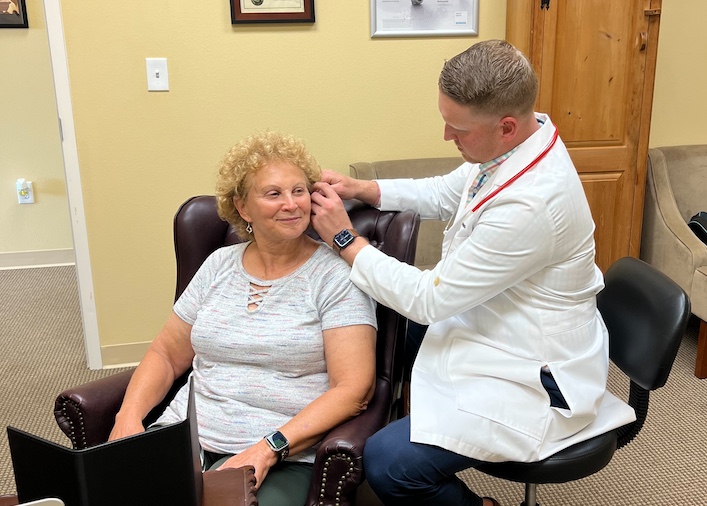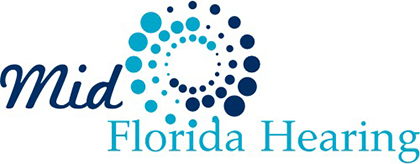The Benefits of Treating Hearing Loss

Strengthened Communication

Improved Relationships
Communication is essential for sustaining healthy relationships. From spending quality time to having long and engaging conversations, communication helps people connect. Untreated hearing loss strains communication which also affects relationships. People often report feeling unheard or ignored by their loved ones with hearing loss.
Because hearing loss makes it challenging to hear, people often overwork themselves in trying to process what is being said. This can be perceived as not being interested or present during the conversation. Treatment alleviates this by increasing the capacity for conversations. This allows people to spend time with others with greater ease and comfort. Being able to communicate freely, spend quality time, and have rich conversations contributes to closeness and connection which improves relationships.

Enriched Social Life

Enhanced Overall Health
Treating hearing loss also improves overall health in a myriad of ways. Extensive research shows that untreated hearing loss increases the risk of developing other health issues. This includes increasing the risk of experiencing cognitive decline and related conditions like Alzheimer’s. Untreated hearing loss also increases the risk of depression as well as accidental injuries. These conditions can deteriorate health and wellness, impact mobility, as well as impact one’s lifespan.
Treatment alleviates these risks by improving health in several major ways. Hearing aids strengthen cognitive functions by providing significant hearing support. This improves brain health and reduces the risk of cognitive decline. Hearing aids also strengthen communication which improves relationships as well as social engagement. This boosts confidence and mental health, reducing the risk of depression. Additionally, hearing aids increase spatial awareness which allows people to move through environments more safely.

Financial Benefits
Studies show that people with untreated hearing loss are more likely to be underemployed or earn less income compared to people without hearing loss. Communication is also crucial for work-life and job performance. Being able to clearly understand work responsibilities as well as communicate in the workplace is essential for managing work effectively.
Untreated hearing loss can strain these abilities which impacts your capacity to efficiently engage in your work environment. Treating hearing loss addresses these challenges by maximizing hearing capacity. Research shows that treating hearing loss closes gaps in earning potential and underemployment between people with hearing loss compared to those without. Hearing aids allow people to manage professional responsibilities, navigate work environments, as well workplace relationships much more effectively and with greater ease which enhances job performance.
Hearing loss is the third most pervasive medical condition that people navigate today. Though it is really common, the hearing loss still tends to be undertreated. It is estimated that only one-third of people who could benefit from hearing loss treatment, actually receive it. Why is hearing loss underdiagnosed?
Recognizing the Signs of Hearing Loss
Hearing loss typically happens progressively, over a longer period. This means that symptoms and changes to hearing can remain unnoticed for quite some time. It can also be challenging for people to acknowledge that they are experiencing changes in their health. It may be something they are embarrassed about so treatment continues to be out off.
However, it is important to understand that millions of people of all ages experience hearing loss so you are not alone. There are a vast amount of resources and services that are available to you to change and improve the trajectory of your hearing health.

The Difference Between Hearing Aids & Hearing Amplifiers
Hearing aids and hearing amplifiers are both hearing instruments that amplify or increase the volume of sound. But there are key differences that highlight the distinct purposes these technologies serve. Hearing aids are FDA-regulated medical devices that are prescribed by a hearing healthcare specialist. They are specifically designed for people with varying degrees of hearing loss. These electronic devices contain a microphone, amplifier, and speaker which work together to absorb, amplify, and process sound. Today’s hearing aids offer a range of features and technologies that adjust sound in specific ways to meet the wearer's needs, enhance connectivity, and deliver optimal sound quality.
This differs from hearing amplifiers which are wearable devices that only amplify sound. A microphone that one wears, increases the volume of sound. Amplifiers are designed for a broader population of people than just people with hearing loss. They can be used by people who have hearing challenges but are not diagnosed with hearing loss or others who want to hear louder sounds in certain environments. Amplifiers are not FDA-regulated and do not require a prescription.
Treating Hearing Loss
Treatment is highly accessible, painless, and offers countless life-changing benefits. Identifying your hearing needs and pursuing treatment that effectively meets those needs can change your daily life.
Hearing aids, the most common form of hearing loss treatment, provide ample support with hearing and process speech as well as sound, stretching your hearing capacity. This allows you to have conversations, move through social settings, and participate in a range of activities with greater ease. Treatment improves relationships and enriches social life, allowing you to live more fully.
Treating hearing loss not only transforms hearing health but the overall quality of life. Our sense of hearing is a significant way we move through our daily lives. When left untreated, the consequences can be multifaceted. Treatment offers countless benefits that improve relationships, health, social life, work performance, and confidence. Treating hearing loss allows people to navigate conversations, quality time, and daily interactions with greater ease. People are better able to be more present and themselves, allowing them to live life much more fully.
